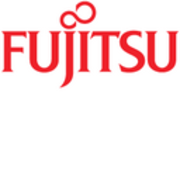Converged Infrastructure integrates storage, computing, and networking into a single cohesive framework. It offers efficiency and simplified management for organizations seeking streamlined IT operations.
This technology simplifies data center management by consolidating resources into integrated systems, reducing the complexity of deploying and maintaining separate hardware components. It provides a seamless experience for IT teams, allowing them to focus on strategic initiatives rather than routine maintenance. Enhanced scalability and reduced footprint are among its highlighted advantages.
What are the critical features of this solution?Industries like finance and healthcare implement Converged Infrastructure to improve data availability and precision. These sectors benefit from its robust architecture which supports heavy data processing and high workload demands, ensuring continuous and reliable performance.
Integrating storage, compute, and network resources into a single solution, Converged Infrastructure is instrumental for organizations that need to enhance efficiency, reduce downtime, and respond swiftly to technological advancements.
| Product | Market Share (%) |
|---|---|
| HPE ConvergedSystem | 16.6% |
| Oracle Private Cloud Appliance | 14.2% |
| Dell VxBlock System | 10.9% |
| Other | 58.3% |




















Converged Infrastructure optimizes data center efficiency by integrating compute, storage, and networking into a single cohesive system. This integration reduces complexity and simplifies management, leading to decreased operational costs and increased uptime. By utilizing a unified infrastructure, you can allocate resources dynamically, streamlining processes such as provisioning, deployment, and scaling. This consolidation also helps in reducing energy consumption, contributing to a greener IT environment.
What are the cost benefits of adopting Converged Infrastructure solutions?Adopting Converged Infrastructure solutions provides significant cost benefits by lowering capital and operational expenses. The integrated system reduces the need for separate hardware purchases and maintenance. This streamlined approach minimizes the physical footprint, resulting in decreased energy and cooling costs. Additionally, the simplified management process reduces the need for extensive IT staff, freeing up resources for other strategic initiatives. You can also expect faster deployment times, which translates to quicker return on investment.
What role does agility play in Converged Infrastructure implementations?Agility is a crucial factor in Converged Infrastructure implementations, allowing businesses to rapidly adapt to changing demands. The flexibility of this infrastructure enables quick provisioning and reallocation of resources, which is essential for scaling operations and responding to market trends. With Converged Infrastructure, you can streamline application deployment and reduce the latency involved in resource provisioning, enhancing the ability to innovate and compete effectively.
Why is scalability a key advantage of Converged Infrastructure?Scalability is one of the defining advantages of Converged Infrastructure, allowing for seamless expansion as business needs grow. The integrated nature of the solutions enables you to add or reconfigure resources without disrupting current operations. This scalability supports business growth and can be achieved without needing extensive rewiring or hardware replacement. As a result, you can efficiently manage increased workloads while maintaining performance and service quality.
How do Converged Infrastructure solutions enhance IT security?Converged Infrastructure enhances IT security by providing a standardized and consolidated environment that is easier to monitor and protect. The integrated nature of these solutions simplifies the implementation of security policies, allowing for consistent policy enforcement across the entire infrastructure. Furthermore, you benefit from advanced security features embedded in the hardware and software, such as encryption, automated updates, and comprehensive access controls. This comprehensive approach reduces vulnerabilities and enhances overall data protection.